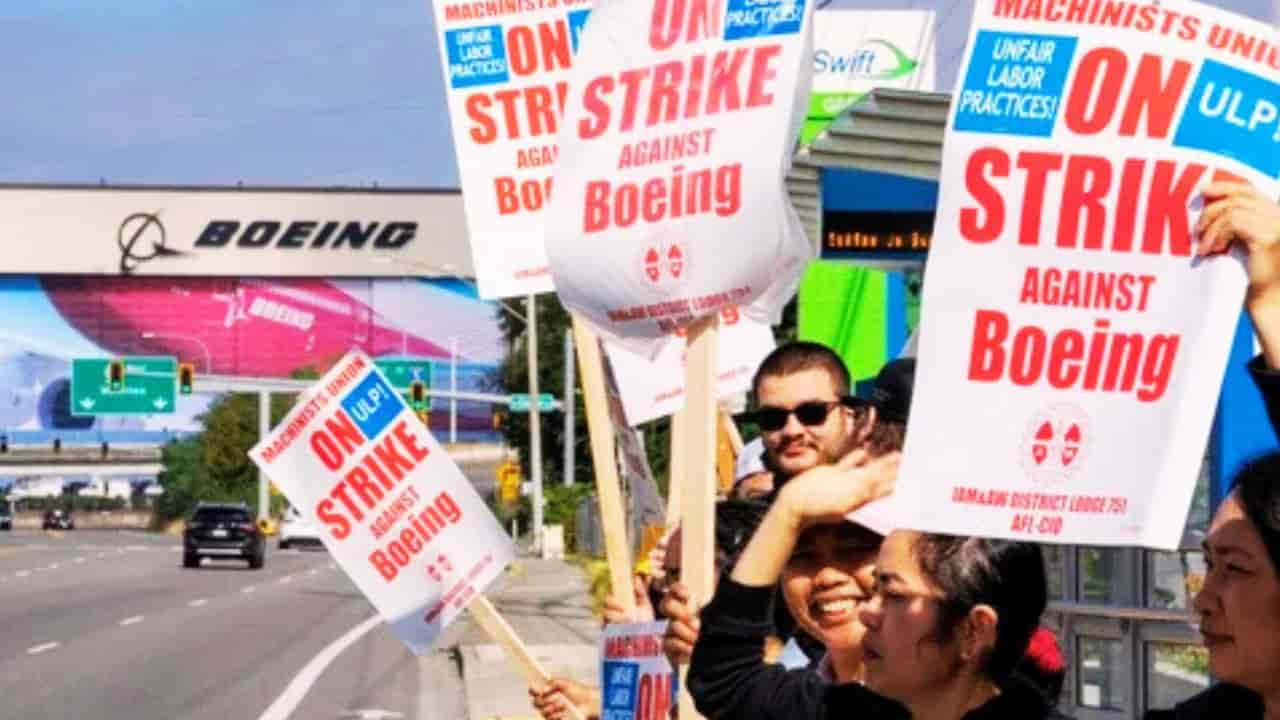Boeing’s Turbulent Skies: Layoffs Loom as Industry Concerns Soar
In a startling turn of events, aerospace giant Boeing is preparing to send out layoff notices to thousands of workers in the coming weeks. This move comes as the company grapples with ongoing labor strikes and mounting industry concerns. As a news reporter on the scene, I’m here to break down the turbulent situation unfolding at one of America’s most iconic companies.
Labor Strife Takes Center Stage
The acting U.S. Labor Secretary, Julie Su, has flown into Seattle to meet with both Boeing management and union representatives. Her visit marks the first time she’s met face-to-face with both sides in an attempt to ease the crippling strike that has gripped Boeing’s West Coast factories since September 13th.
Around 33,000 workers, represented by the International Association of Machinists and Aerospace Workers (IAM), have been on the picket lines for over a month. They’re pushing for a substantial 40% wage hike over four years—a demand that highlights the growing tension between labor and management in the aerospace sector.
Layoffs on the Horizon
Boeing’s troubles don’t end with the strike. The company recently unveiled plans to slash 17,000 jobs and take a $5 billion charge, signaling deep financial woes. Sources close to the matter reveal that Boeing will start sending out 60-day notices to thousands of workers next month, with many cuts hitting the commercial aviation division.
We plan to implement these initial layoffs in mid-January, with the possibility of a second round in December if necessary. We have informed the Society of Professional Engineering Employees in Aerospace, which represents Boeing engineers, that its members will receive notices on November 15th.
Industry alarm bells ring
The aviation industry is experiencing the ripple effects of Boeing’s troubles. Tim Clark, President of Emirates Airline, has voiced serious concerns about Boeing’s ability to deliver on its promises. The delay of the 777X jetliner to 2026—a full six years behind schedule—has particularly irked Clark, who helped launch the program with a massive initial order.
“We will be having a serious conversation with them over the next couple of months,” Clark stated bluntly. “I fail to see how Boeing can make any meaningful forecasts of delivery dates.”
Even more alarming, Clark became the first major industry figure to publicly express fears about Boeing’s financial stability. He hinted at the possibility of an “imminent investment downgrade with Chapter 11 looming on the horizon” unless Boeing can secure additional funding.
Financial Turbulence Ahead?
Boeing’s financial situation is indeed precarious. The company reported just over $10 billion in gross cash, a figure that analysts say will provide some short-term relief. However, many believe Boeing will need to raise up to $15 billion through a share issue by year’s end to weather the storm.
The perception of Boeing’s financial risk is becoming a sensitive topic for major airlines, many of which have billions of dollars in deposits with the planemaker. Some are already looking to limit their exposure due to ongoing delays and quality concerns.
Union Response and Worker Impact
The international president of the IAM, Brian Bryant, expressed his disapproval of Boeing’s job cut plans without holding back. He called it “corporate greed at its worst,” accusing the company of turning its back on the very workers who have carried Boeing through crisis after crisis.
For the thousands of Boeing employees now facing an uncertain future, the coming weeks will be filled with anxiety. The company has opted for involuntary layoffs rather than voluntary departures, aiming to limit severance costs and retain critical skills in a tight labor market.
Looking Ahead
As Boeing navigates these turbulent skies, the entire aviation industry is watching closely. The outcome of the ongoing strike, the success of the planned layoffs, and the company’s ability to secure additional funding will all play crucial roles in determining Boeing’s future.
For now, acting Labor Secretary Su’s efforts to bring both sides to the table offer a glimmer of hope. But with billions of dollars and thousands of jobs on the line, the path forward for this American manufacturing icon remains far from clear.
Stay tuned for updates as this developing story continues to unfold.
Table of Contents
